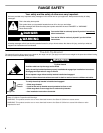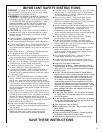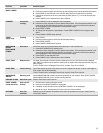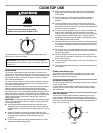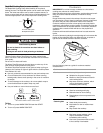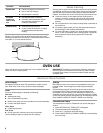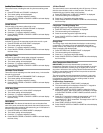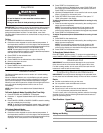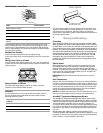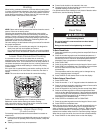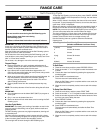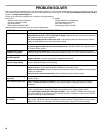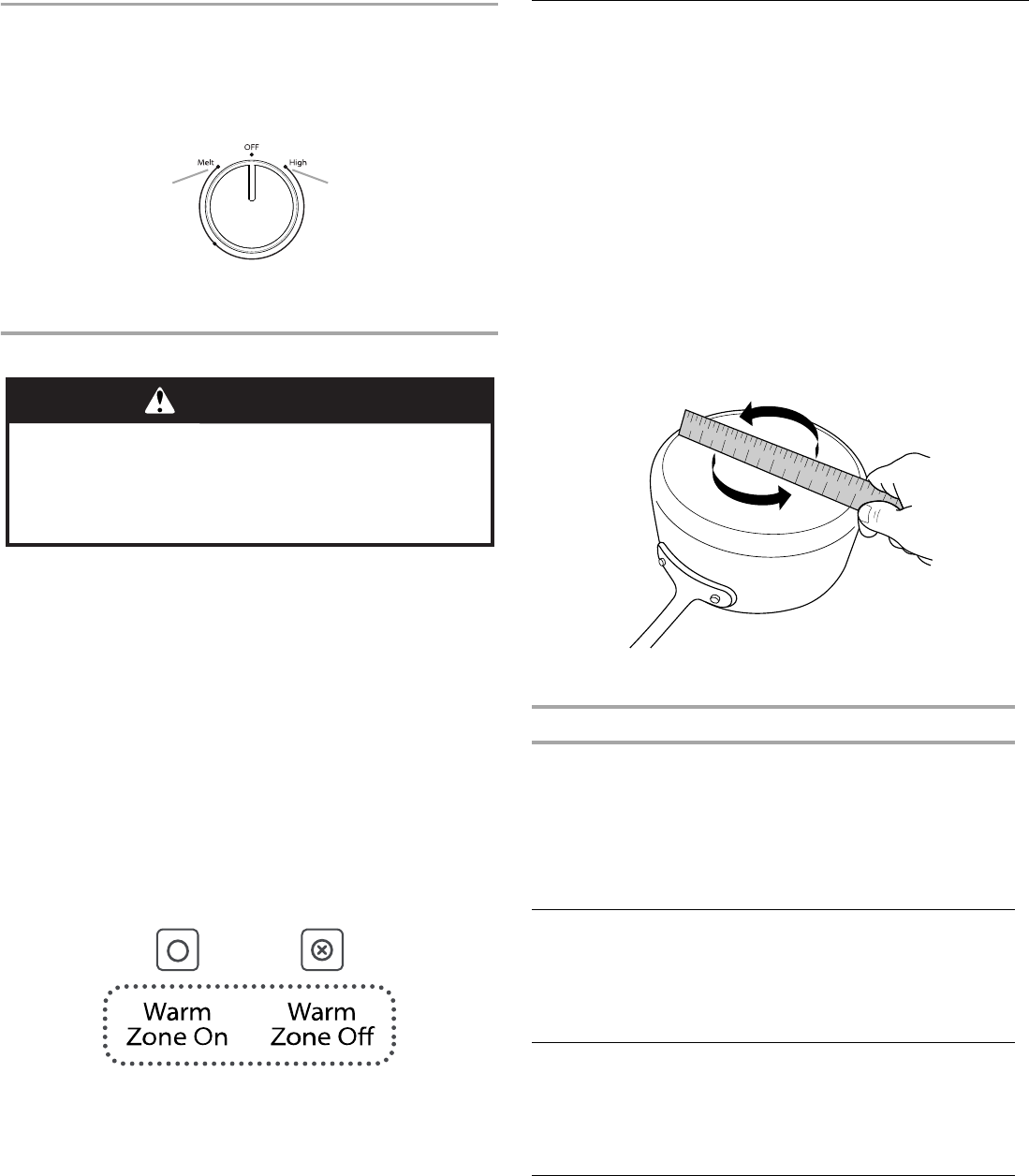
7
Rapid Boil Cooking Zone (on some models)
The Rapid Boil Cooking Zone offers flexibility for 2 optional
heating choices. The Rapid Boil option can be used to boil liquids
faster. The lower heat option can be used to prepare sauces, to
brown or saute foods and to keep food at a low temperature. Use
cookware appropriate in size for the Rapid Boil Cooking Zone.
Warm Zone Element
Use the Cooktop Warm Zone Element to keep cooked foods
warm. One
hour is the recommended maximum time to maintain
food quality.
Do not use it to heat cold foods.
The Warm Zone Element can be used alone or when any of the
other surface cooking areas are being used.
The Warm Zone Element area will not glow red when cycling on.
However, the Cooktop On light will glow while the Cooktop Warm
Zone Element is in use.
■ Use only cookware recommended for oven and cooktop use.
■ Cover all foods with a lid or aluminum foil. When warming
baked goods, allow a small opening in the cover for moisture
to escape.
■ To avoid damage to the cooktop, do not use plastic wrap to
cover food because the plastic wrap may melt.
■ Use pot holders or oven mitts to remove food.
To Use:
1. To turn on, press WARM ZONE ON and then START.
2. To turn off, press WARM ZONE OFF.
Cookware
IMPORTANT: Do not leave empty cookware on a hot surface
cooking area, element or surface burner.
Ideal cookware should have a flat bottom, straight sides and a well-
fitting lid, and the material should be of medium-to-heavy
thickness.
Rough finishes may scratch the cooktop. Aluminum and copper
may be used as a core or base in cookware. However, when used
as a base, they can leave permanent marks on the surfaces.
Cookware material is a factor in how quickly and evenly heat is
transferred, which affects cooking results. A nonstick finish has the
same characteristics as its base material. For example, aluminum
cookware with a nonstick finish will take on the properties of
aluminum.
Cookware with nonstick surfaces should not be used under the
broiler.
Check for flatness by placing the straight edge of a ruler across the
bottom of the cookware. While you rotate the ruler, no space or
light should be visible between it and the cookware.
Use the following chart as a guide for cookware material
characteristics.
A.Lower heat option
B.Rapid Boil option
A
B
WARNING
Food Poisoning Hazard
Do not let food sit for more than one hour before or
after cooking.
Doing so can result in food poisoning or sickness.
Cookware Characteristics
Aluminum ■ Heats quickly and evenly.
■ Suitable for all types of cooking.
■ Medium or heavy thickness is best for
most cooking tasks.
■ May leave aluminum residues, which
may be diminished if cleaned
immediately after cooking.
Cast iron ■ Heats slowly and evenly.
■ Good for browning and frying.
■ Maintains heat for slow cooking.
■ Rough edges or burrs may scratch the
cooktop.
Ceramic or
Ceramic glass
■ Follow manufacturer’s instructions.
■ Heats slowly but unevenly.
■ Ideal results on low to medium heat
settings.
■ May scratch the cooktop.
Copper ■ Heats very quickly and evenly.
■ May leave copper residues, which
may be diminished if cleaned
immediately after cooking.
■ Can leave a permanent stain or bond
to the cooktop if overheated.
1
2
3
4
5
6
7
8
9
1 0
1 1
1 2
1 3
1 4
1 5
1 6
1 7
1 8
1 9
2 0
1
2
3
4
5
6
7




